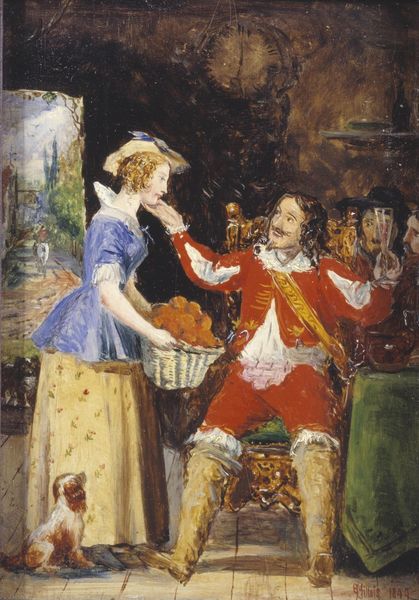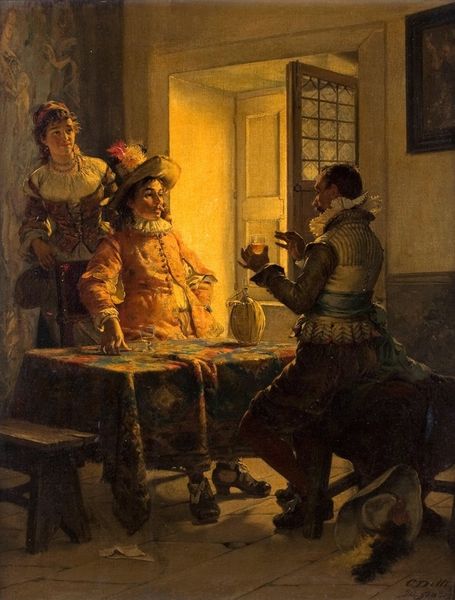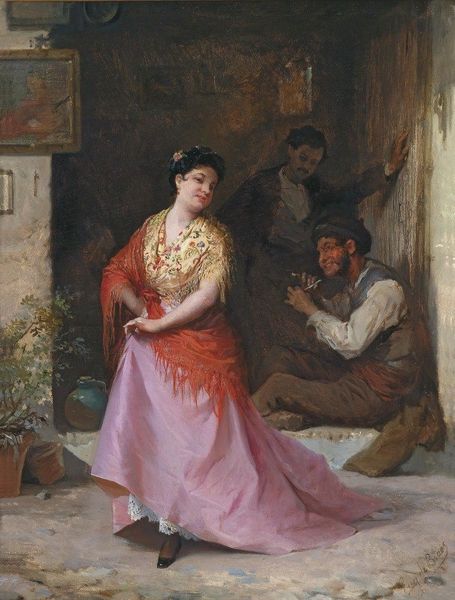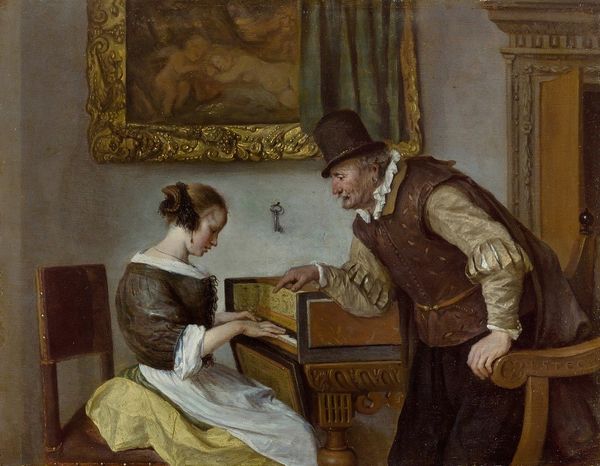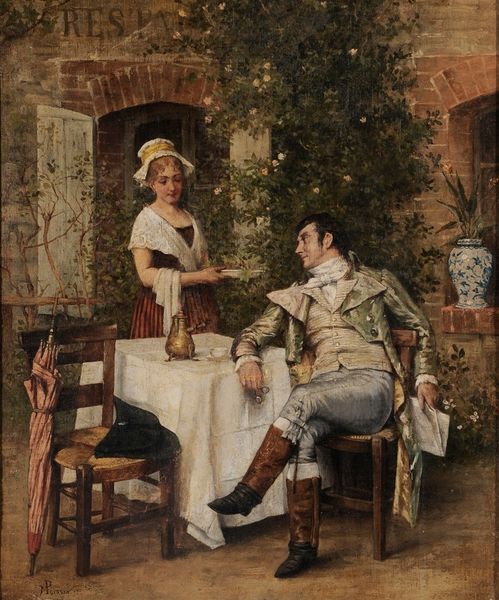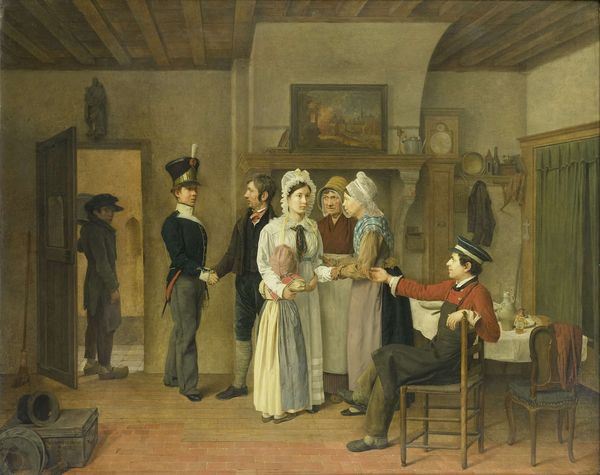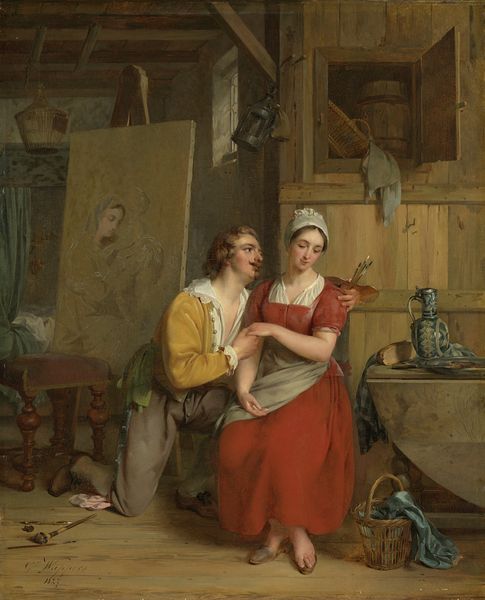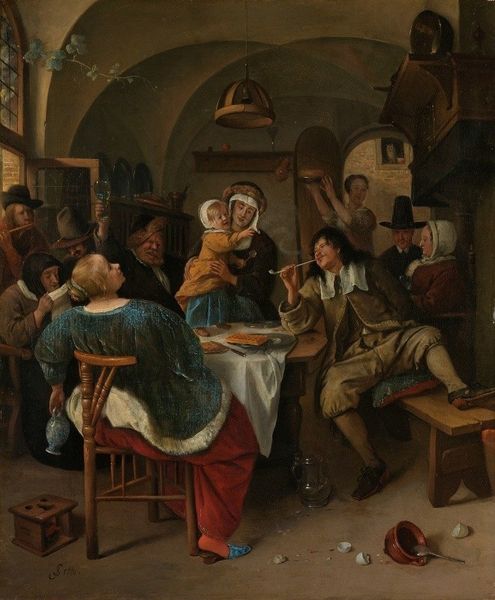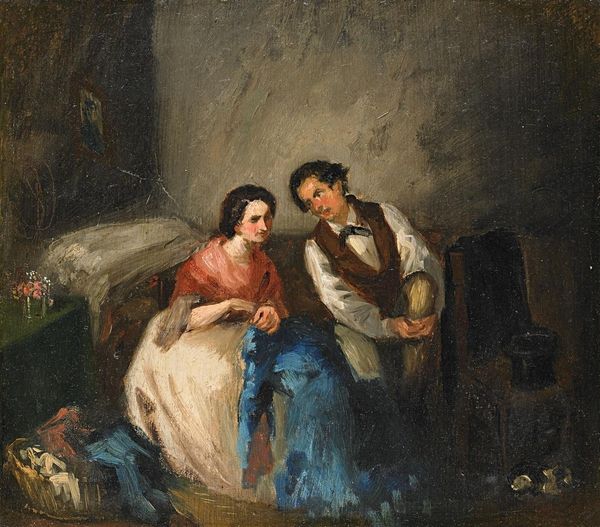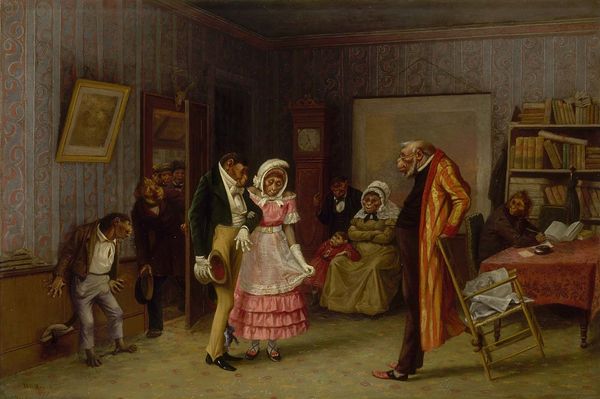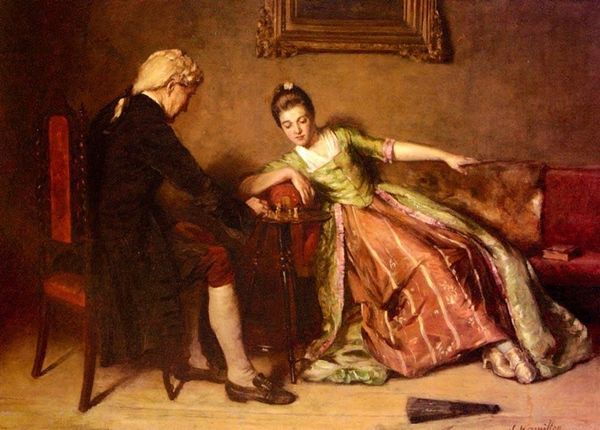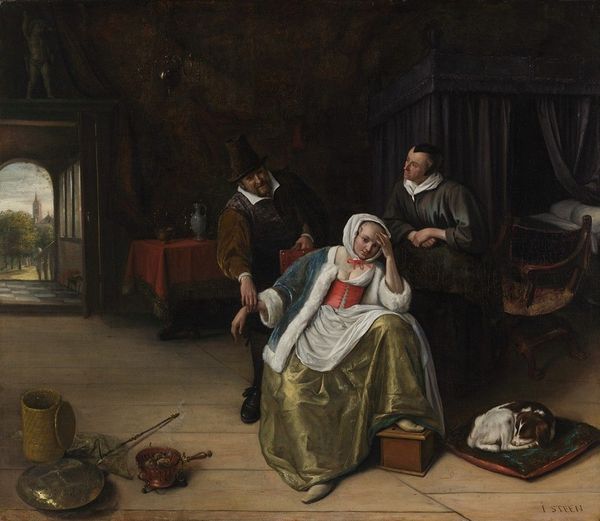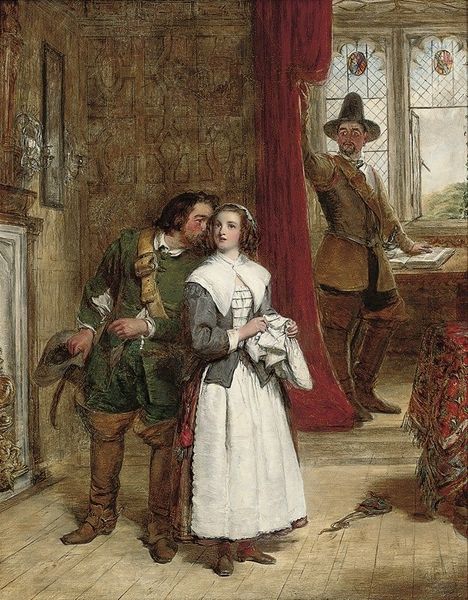
painting, oil-paint
#
portrait
#
figurative
#
painting
#
oil-paint
#
oil painting
#
portrait reference
#
romanticism
#
genre-painting
#
realism
Copyright: Public Domain: Artvee
Editor: This painting, by Wilhelm Marstrand, features an older gentleman pouring red wine for a young Italian woman. The setting seems intimate, maybe a tavern or wine cellar. I’m struck by the almost theatrical nature of the scene; there's a sense of narrative unfolding right before our eyes. How do you interpret this work within its historical context? Curator: It's insightful to pick up on that performative quality. Marstrand was working within a period where genre painting was incredibly popular. The rise of the middle class created a market for images that depicted everyday life, but often with a moralizing or sentimental bent. These paintings functioned as visual narratives reflecting societal values and norms. What do you notice about the way the figures are positioned and what kind of impression does this positioning convey? Editor: Well, she's seated, almost passively receiving the wine, while he's standing, very much in control of the pour. Is it a commentary on power dynamics of the time? Curator: Precisely! Consider the societal expectations and gender roles prevalent in 19th-century Europe. Genre paintings, like this, frequently reinforced those structures, often depicting women in passive or domestic roles, while men were portrayed as active agents in the public sphere. Even the act of pouring wine, something seemingly innocuous, takes on a layer of social meaning. How do you think this painting might have been received by the public back then? Editor: Perhaps as a charming glimpse into Italian life, but also subtly reinforcing established social hierarchies? Curator: Exactly. And think about the institutions that displayed such works. Salons and galleries played a critical role in shaping public taste and disseminating ideological messages through art. They curated not just images but also specific ways of seeing the world. Editor: This makes me look at genre paintings in a new light – it's fascinating how seemingly simple scenes can be so layered with social and political meaning. Curator: Indeed, the ‘simple’ scenes are often the most potent vehicles for conveying complex cultural messages.
Comments
No comments
Be the first to comment and join the conversation on the ultimate creative platform.
